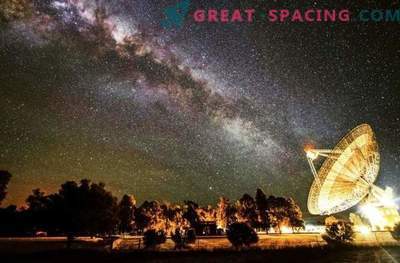
“Are we alone in the universe?”. This question fascinated, tormented and even embarrassed people for hundreds and thousands of years. It seems that we will never be able to find intelligent beings. There are many theories why we are not able to make contact or to see hints of the presence of advanced extraterrestrial civilizations, although scientists have spent dozens of years making earthlings noticeable.
However, the missions steadily discover new planets resembling the Earth and located in the habitat zone (distance from the star, allowing the planet to have liquid water). Some believe that almost every star should have a planet, which means that there will definitely be a populated life somewhere. But are we looking hard enough?
With this, students from Lubin (Poland) tried to figure out the “Trillion Planet Survey” project. This experiment uses a set of telescopes aimed at the neighboring Andromeda galaxy, as well as other galaxies, including the Milky Way. The authors suggest the existence of a civilization that resembles ours or more advanced, which tries to demonstrate its own presence with the help of an optical beam of concentrated energy. There is also an assumption that the transmission wavelength of this beam will be available to our detection. Moreover, the “lighthouse” was left for a long time so that earthly scientists could notice it.
From radio waves to light
For the past half century, the dominant broadcast from the Earth has concentrated on radio, television and radar signals. And scientists from the Institute for Extraterrestrial Intelligence Search (SETI) used powerful radio telescopes to pick up signals from other civilizations. Recently, thanks to the exponential acceleration of the development of photon technologies, optical and infrared wavelengths offer a new type of search that will extend the detection range.
Some believe that there is a “blind-blind” scheme, where we and an alien civilization do not know about the existence of each other, but are trying to find it. This idea is based on the use of photonics created for the movement of small spacecraft through space at relativistic velocities in order to guarantee the first interstellar missions. This project received funding from NASA Starlight and billionaire Yuri Milner. New technology will be the brightest in the universe, and therefore should be noticeable.
Of course, not everyone approves of the desire to advertise the Earth to all space, especially for potentially advanced extraterrestrial civilizations. Such missions face bureaucratic problems and a lack of developed technology. Therefore, there are only a few projects, such as the famous Voyager-1 probe with a gold plate, on which data about the Earth (its location, cultural features, etc.) are recorded.
Search for stars
Now the project participants are closely studying Andromeda. Telescopes receive a set of images, where each device covers 1/30 piece of the galaxy. They are combined to create a scale image. Then the frame is associated with a more ancient image, in which there are no known signals. It is expected that the new snapshot will demonstrate the source of transient signals, which will be processed in a special program to search for false positives. It is important to have a network of telescopes to shoot Andromeda from different angles.
The Trillion Planet Survey project seems inspiring, because it is possible to observe other galaxies that can have other creatures that may be looking at us. The very possibility of having another life is intriguing. SETI members have to be patient and optimistic. Andromeda removed 2.5 million light years. That is, any signal found will be sent 2.5 million years ago. This is enough for the civilization that sent it to have already become extinct by the time the signal arrives at Earth.
This does not mean that we must surrender. It can be said that sometimes this search converges to the discovery of archaeological relics and fossils, which make it possible to understand the evolution of cosmic life.











































